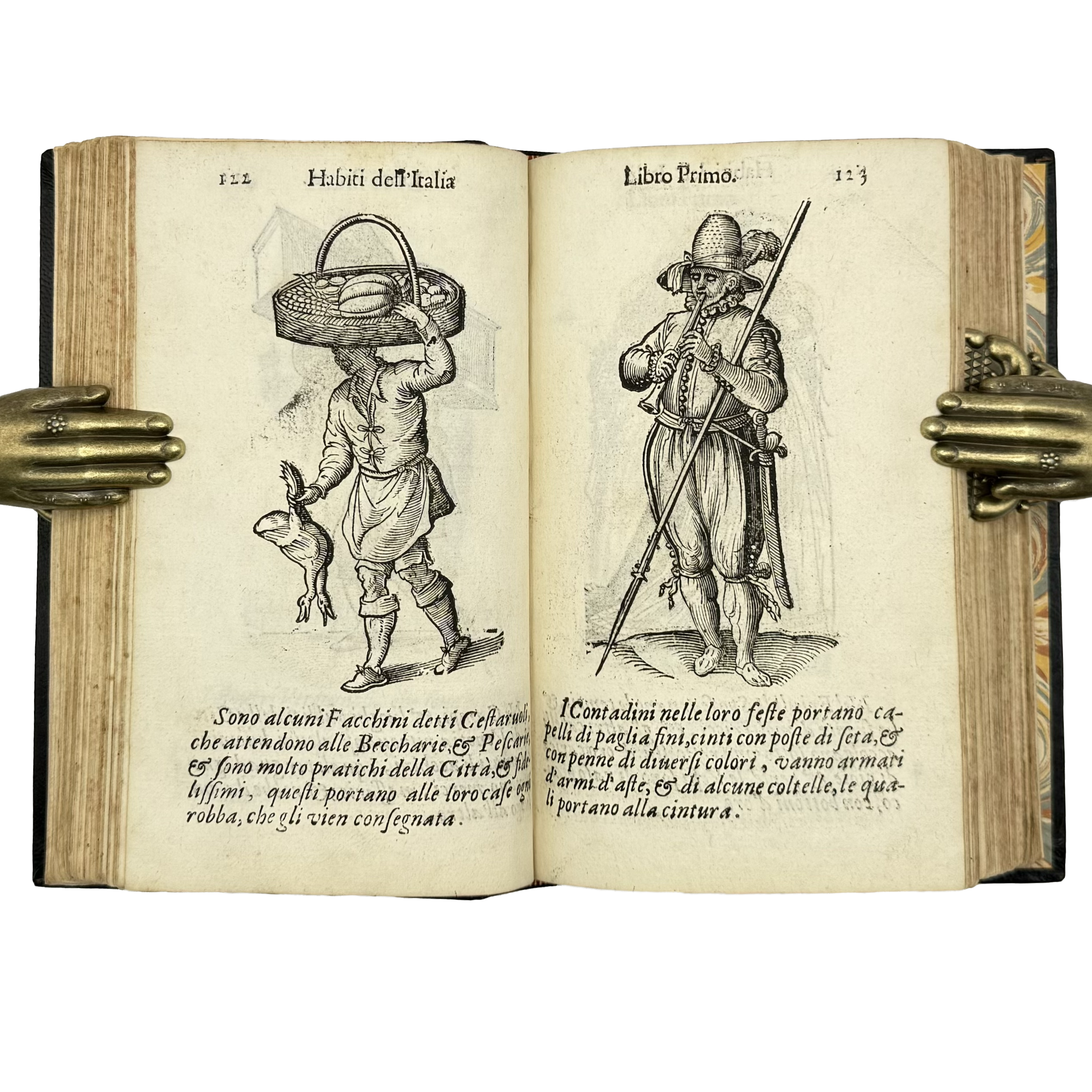Join our email list
Stay informed on recent acquisitions, fair, and news regarding La Fenice


























Vecellio, Cesare
Habiti Antichi
1664, Venezia, Combi E La Nou
3rd Edition
First published in Venice in 1590, Vecellio’s celebrated Costumi is among the most important costume books of the Renaissance, a richly illustrated survey of dress and custom across the known world. Cesare Vecellio, a Venetian painter and cousin of Titian, brought together over 400 woodcut illustrations that depict not only garments but also the occupations, ranks, and daily gestures of men and women from Europe, Asia, Africa, the Ottoman Empire, and the New World. While many images rely on earlier sources and hearsay (particularly those of distant lands) the book’s impact is undeniable. It shaped Europe’s visual imagination of global costume for generations, and its blend of erudition and artistry ensured its place as one of the great pictorial encyclopedias of the Renaissance.
The expanded 1598 edition introduced, for the first time, the costumes of the Americas, reflecting the era’s widening horizons and Europe’s fascination with the exotic. The present third edition, published posthumously in 1664, remains the most extensive and celebrated recension. It reorganizes the material into new “books,” retaining the rich Italian texts that explain each image, while also simplifying or condensing certain regional sections. In all, the work preserves 294 costumes, of which 190 concern Italy, 50 the Ottoman world, and the rest the wider continents. The woodcuts, executed by skilled Venetian craftsmen, are striking for their vitality: figures are shown in motion, accessorized with tools, headgear, or jewelry, and placed within architectural or landscape settings that enliven the scene. As a claryfing note: most art historians consider Titian’s “participation” more of a commercial or honorary attribution than a factual collaboration. It may reflect family pride, a way to elevate the work’s authority, or confusion over Cesare’s kinship with Titian (sometimes called “brother” instead of cousin). Stylistically, the images are closer to workshop/illustrative practice than to Titian’s painterly hand. On the title page, the work is dedicated to Martin Vidman, Count of Ottemberg, a Venetian nobleman, and bears a printer’s woodcut device featuring Minerva, the emblem of Combi & La Nou.
Opening this book is like peeking through a peephole into the Renaissance streets. Each figure, with their tools, accessories, and gestures, gives you a glimpse of everyday life: a merchant adjusting his robe, a noblewoman showing her finery, an Ottoman soldier mid-stride. It’s not fashion plates in the modern sense but a living encyclopedia of human variety. Page after page of gowns, turbans, armor, jewelry, and shoes that tell us how people wished to be seen four centuries ago. The fact that it carries Titian’s name, even if only as family branding, only adds to the fun.
Pp. [1] f.e., [16], 415, [1], [3] r.e.
Modern full black morocco leather binding, spine with five raised bands, gilt title and ornaments; red sprinkled edges; marbled endpapers. Erased stamp on title page (purchase documentation available). Attractive printer’s device depicting Minerva. With woodcut headpieces, elaborate tailpieces, and initials. 415 almost full-page woodcut illustrations, each accompanied by a paragraph of explanation. Curiously, pages 353, 368 (quire Z) are present twice. A fresh, crisp copy in an attractive modern binding. A fine copy.
Dimensions (inches): 8 x 5 x 1.5
Cesare Vecellio (c. 1521 – c. 1601) was an Italian painter, draughtsman, engraver, and costume-publisher, cousin of Titian. He worked early on in Titian’s workshop and accompanied him to Augsburg in 1548. By ~1570 he turned more to publishing and print design.